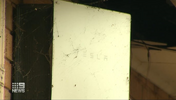Chrisfromnz
Member
Not sure about the other advice here. But I’m in Adelaide and had almost exactly the same experience, and level of degradation. Mine was installed Apr 2020, so a couple of months before yours, it’s also continuing to degrade by 0.5-1% per month. Tesla initially declined my warranty claim. But with some strong pushing of the retailer and looking at the definition of a Major fault under the ACCC consumer law have Tesla have now agreed to replace it under warranty. In my opinion nearly 20% degradation after 18 months is a major failure. 1). Had you known that level of degradation would occur would you have bought it? 2). Does 11.5kwh usable after barely 12 months meet any reasonable persons definition of acceptable wear. 3) Does it meet the description of what was sold? 3). Have Tesla / retailer been upfront about expected Degradation.
If you read the ACCC website, you will see that your retailer must replace it under Australian law. They cannot fob you off to Tesla either. You may have to make some noise / be prepared to take it to small claims court. But in my Opinion Australian Consumer law is on your side, and it’s not a close call either.
Look at the testing done on the powerwall and other batteries by the battery test centre. Plus degredation on mobile phone batteries, for some evidence on what is reasonable.
Based on my research this issue is only impacting a relatively small number of people, but given it requires people to actively check and have some technical ability it may just be that the problem may not be obvious.
I want to believe it is a good product, but I think Tesla need to step up their support. The 30% 10 year is a cop out warranty, and Australian Consumer Laws overrides it.
If you read the ACCC website, you will see that your retailer must replace it under Australian law. They cannot fob you off to Tesla either. You may have to make some noise / be prepared to take it to small claims court. But in my Opinion Australian Consumer law is on your side, and it’s not a close call either.
Look at the testing done on the powerwall and other batteries by the battery test centre. Plus degredation on mobile phone batteries, for some evidence on what is reasonable.
Based on my research this issue is only impacting a relatively small number of people, but given it requires people to actively check and have some technical ability it may just be that the problem may not be obvious.
I want to believe it is a good product, but I think Tesla need to step up their support. The 30% 10 year is a cop out warranty, and Australian Consumer Laws overrides it.




